To consider the game "retro", today it is considered sufficient to pixelate the graphics, add neon and VHS - and that's it, already "retro", "8 bit", etc. But not everyone agrees with this.
YouTuber David Murray ( The 8-Bit Guy ) decided that the retro game should run on retro computers. And I wrote such a game. The previous part ( Planet X2 ) he wrote for the Commodore 64, and this one he decided to write for DOS.
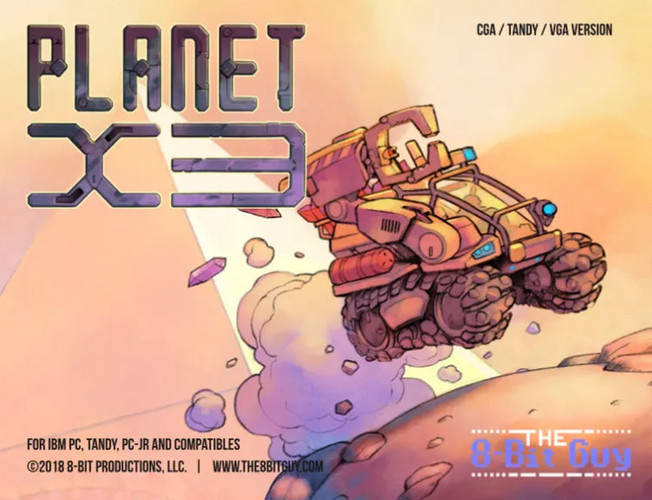
The genre of the game is real-time strategy.
System requirements
The game was originally conceived to run on a Tandy 1000 EX computer - Intel 8088@7.16MHz/256KB RAM / CGA / 360K FDD (picture from wikipedia).

Hence the minimum system requirements:
- 8088 @ 4.77 Mhz (recommend 8 Mhz)
- 256K of RAM
- 360K or 720K floppy, or install on hard drive.
- PC-Speaker, Tandy, or Ad-Lib sound
But many demanded to make support for VGA, which, in turn, required a more powerful computer:
- 8088 @ 10 Mhz (recommend 286 at 10 Mhz)
- 256K of RAM
- 360K or 720K floppy, or install on hard drive.
- PC-Speaker, Tandy, or Ad-Lib sound
For those who have more powerful computers, there is Dune 2.
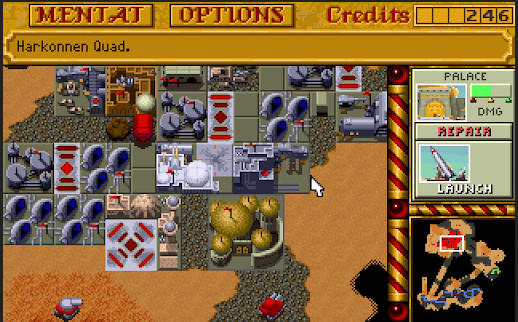
For those who do not have HT, but want to play, there is always dosbox. The game, moreover, was developed in it, and then tested on real hardware.
Graphics
In addition to working on an XT with a four-color CGA (320x200x4), David wanted to use the composite CGA mode - it allowed him to get 16 colors when connected to a CGA video card of an NTSC TV at the cost of a loss of sharpness (160x200x16), which was not fatal for games. And, for the company, the low-resolution mode of Tandy Graphics - it is roughly similar to the composite CGA - also 160x200x16.
Tandy has a high resolution mode, similar to EGA - 640x200x16. But he has increased requirements for computer performance, so it was decided not to implement it. As well as the EGA mode itself - both due to the complexities of programming and due to the fact that the majority of voters wanted VGA. So, as a result, four modes were implemented in the final version of the game (from left to right, from top to bottom) - CGA, CGA composite, Tandy low-res, VGA. After the end of the development, one of the backers from the kickstarter wrote to David "and add such and such video modes, it's not difficult there." To which it was said "here's the source code - add it." So he added: Hercules 720 x 350 x 2 Plantronics Colorplus 320 x 200 x 16
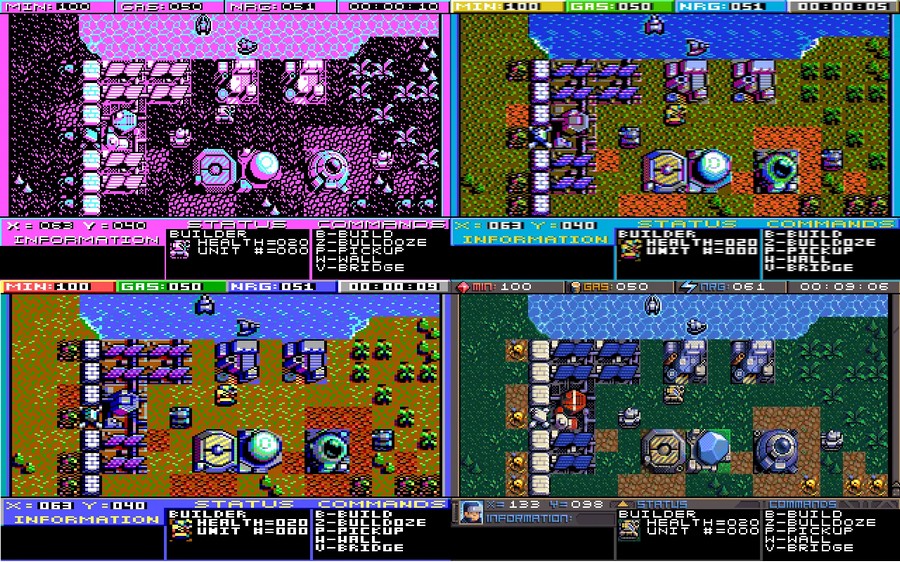
Tandy Hi-Res 640 x 200 x 16
Tandy Med-res 320 x 200 x 16 (auto-down-converted from VGA graphics)
EGA 640 x 200 x16
Sound
Again, due to the connection to Tandy, it was decided to make the music in three voices, since the Tandy Sound System has exactly so many channels. On a PC speaker, by some tweaks, you can also get a semblance of "polyphony", and using only three Adlib channels did not cause any problems at all, since there are more of them there.
Initially, it was planned to use Adlib's free channels for sound, but in the end it was decided to leave the sound on the speaker - a common practice in games of the eighties.
The game also has direct support for the OPL2LPT sound card - analogue of Adlib'a for the parallel port. This card works through a driver that intercepts calls to the Adlib port and redirects them to LPT. But this requires significant resources, because it is almost impossible to use it on the XT and 286, you need at least 386. With the support in the game, the need for a driver disappears and you can even listen to music on the XT.

Plus there is support for a similar device TNDLPT , which, as you might guess, instead of Adlib, pretends to be Tandy Sound System.
You can read about how to achieve polyphony on a PC speaker here . The author of the article, moreover, took part in the development of the game.
By the way, the game sounds better on real hardware than in a dosbox. This is especially noticeable on the speaker.
Game versions
In addition to the differences in versions in physical copies (because the game was completed after it went gold), there are two versions of the game - for a 360K floppy disk and for a 720K floppy disk.
The first is the CGA version, it has no VGA support and only eight cards.
The second is the VGA version, with a full set of cards (thirteen).
Due to the limitations on the size of floppy disks, some of what was planned earlier had to be thrown out - because computers of the eighties did not have a hard disk at all, so the game must fit on a floppy disk (so as not to juggle disks during the game).
Equipment
The minimum purchase is digital. It includes an archive with two versions of the game, images of floppy disks, instructions and a tactical guide with maps, several versions of the soundtrack (for different sound cards). You also get the digital version when you buy the physical version.
Physical versions differ by the floppy disk included - 360K, 720K or both, and the presence / absence of the author's autograph. A box, manuals and a cassette with a soundtrack are included in all versions.

Plot
He is here at the level of quake or duma - "three lines in readme" (several pictures in the manual). People colonized the galaxy and one of the colonial ships came across hostile aliens Protoids. The nearest colony is 12 years old, so you have to figure it out on your own.
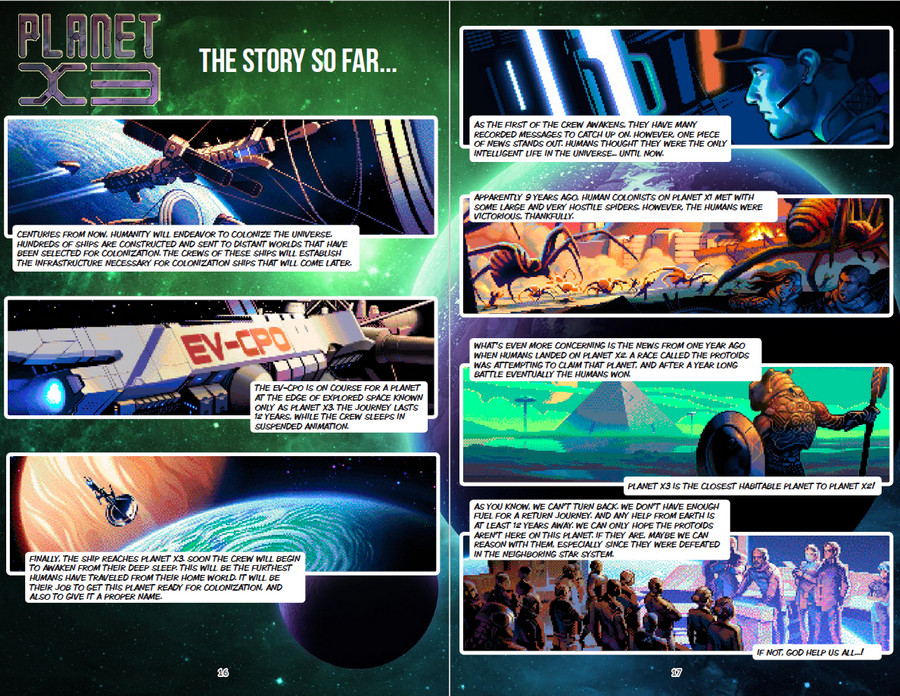
Voiced comic from the manual:
Game process
The process itself is pretty standard - to rebuild the base, extract resources, build units, kill the enemy.
Only for those who are accustomed to "modern" RTS, keyboard control will be unusual. You control one unit at a time.
The screenshots are further from the VGA version - I don't have much nostalgia for CGA.
Units
Builder is a builder. It can build buildings, walls and bridges, demolish objects from the map (all kinds of trees) and move some objects (stones, corpses).
Tank is a basic military unit. Can shoot, can self-destruct. Building a tank at the beginning of the round, driving it to the enemy base and detonating it before the enemy has time to rebuild is a perfectly acceptable strategy. The tank itself cannot shoot back from the enemy. Automatically shoots the nearest enemy on the gap, but deals less damage than manual aiming.
Heavy tank / Sentry tank. Can shoot - but only with manual guidance, it is difficult to hit moving units. But you can shell buildings. But the main purpose is a mobile turret. In Sentry mode, it stands still and fires at all enemies running past.
The picture shows a builder, two tanks and one heavy tank in sentry mode. In dynamics, he turns the tower and looks more fun.

Frigate is a water unit. Mandatory on some maps where enemy bases are located on the water.

Building
Headquarters - headquarters. Not really needed, just the first building. If you lose, you do not lose, you can always build an additional one.

Smelter - converts all kinds of ore into minerals. He takes ore only from neighboring cells - therefore, you must drag stones, crystals and corpses of units to the building as a builder.

Refinery - extracts gas from a geyser, everything is familiar here.
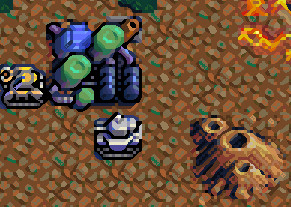
Factory - a factory that builds units. If placed near the water, it will be able to build water units.

Power station / Solar panels. Power plant and solar panels. Solar panels produce energy, but only if they are connected to a power plant.

Radar Station - radar. Unlike "modern" RTS, such as Dune2, here the radar does not show the minimap, but upon request it scans the map and displays it in full screen. Can show units + buildings, water, volcanoes or crystal deposits. Each scan costs a measurable amount of energy.

Missile Silo is a missile silo. Similar to the Harkonen rocket from Dune 2. To start, you need to enter the coordinates of the target.
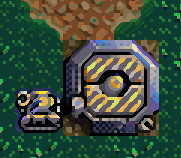
Resources
There are three types of resources - minerals, gas, energy. Minerals are mined from ore that you drag to the Smelter with your handles. Gas is extracted from geysers, as in the same Starcraft. Energy is produced by solar panels.
All three resources are accumulative, as well as energy. And it is spent on buildings in the same way as gas and minerals.

Enemies
There are 2-3 enemy bases on each map, which begin development at the same time as the player. They begin to attack in about ten minutes.
The enemy has two types of infantry and tanks. Scouts attack only in close combat, troopers can shoot three cells, tanks shoot at the same range as the player's tanks. At the same time, it is twice as thick.
The computer is not burdened with intellect here and stupidly rushes towards the player's base, the path finding algorithm is quite basic. In order not to bother him with the construction of bridges, all computer units are able to move on water (infantry slowly, tank - at full speed).
Enemy base:

Control
Start with the fact that you have a headquarters and two builders. The goal is to destroy all enemy buildings, including the cannons. It is not necessary to destroy units.
The game is controlled from the keyboard. Movement by buttons, actions - by hot keys. Units and buildings can be assigned a hotkey from 1 to 0.

No one can walk or work diagonally, everything is strictly horizontally and vertically. The list of possible actions of the unit is in the lower right corner, you do not need to remember all the buttons.

The game has two modes of action. Either you have an active unit / building, or when you press Enter, you switch to Browse mode, the cursor turns into a one-cell frame and you can move and select objects within the screen. There is no scrolling in the game, you can "leave" outside the screen only on some unit.
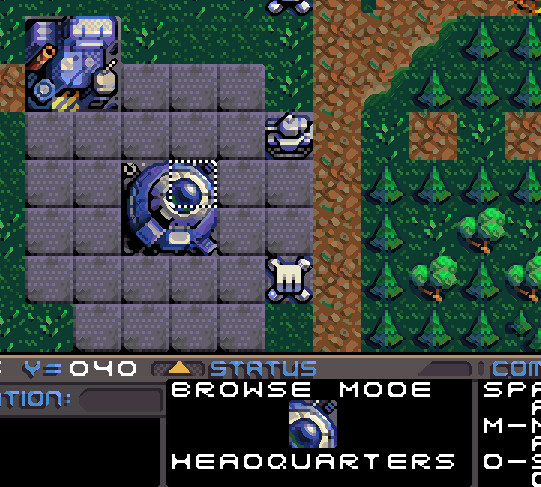
In the menu there is an item about mouse control, but when you press it you get the message "do not poke this button anymore": You

can save, but there is only one slot. If you want several saves, you will have to exit each time and rename the file.
There is no story campaign in the game, after starting from the menu, select a map and play on it until victory or defeat.
General impressions
I think that if the game came out at the time of the hardware for which it was written, it could well become a hit. Especially if a map editor was included with it. By and large, I have one complaint with her - there is no campaign. Add a splash screen, add plot inserts between missions, add a transition from level to level and a "final movie" ...
Taking into account the restrictions set by the developer, the game came out good. Yes, the mechanics are simple, but the AI is dumb. But all this does not interfere with enjoying the game at all.
Related links
Purchase page . You can purchase only the digital version, or you can buy any of the physical versions.
Video about the development of the game:
Part 1 - the origin of the idea, the first sketches.
Part 2 - working prototype, kickstarter.
Part 3 - development features, VGA version.
Part 4 - the final version, shoving the game into boxes while eating pizza in the process.
Soundtrack for the game in google music